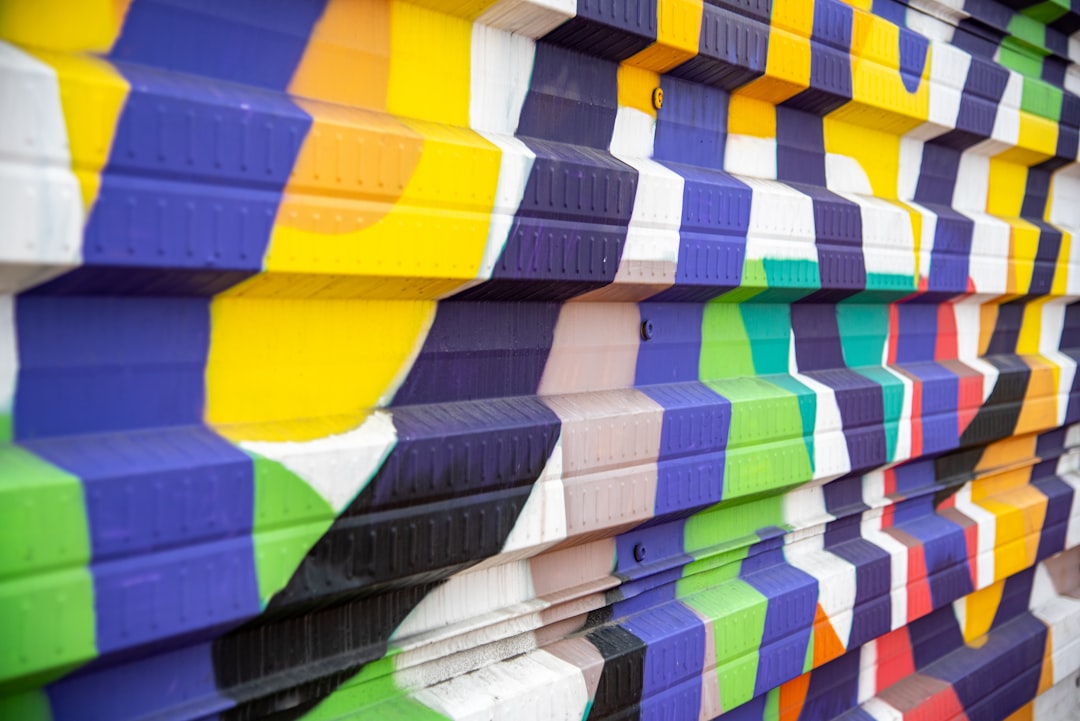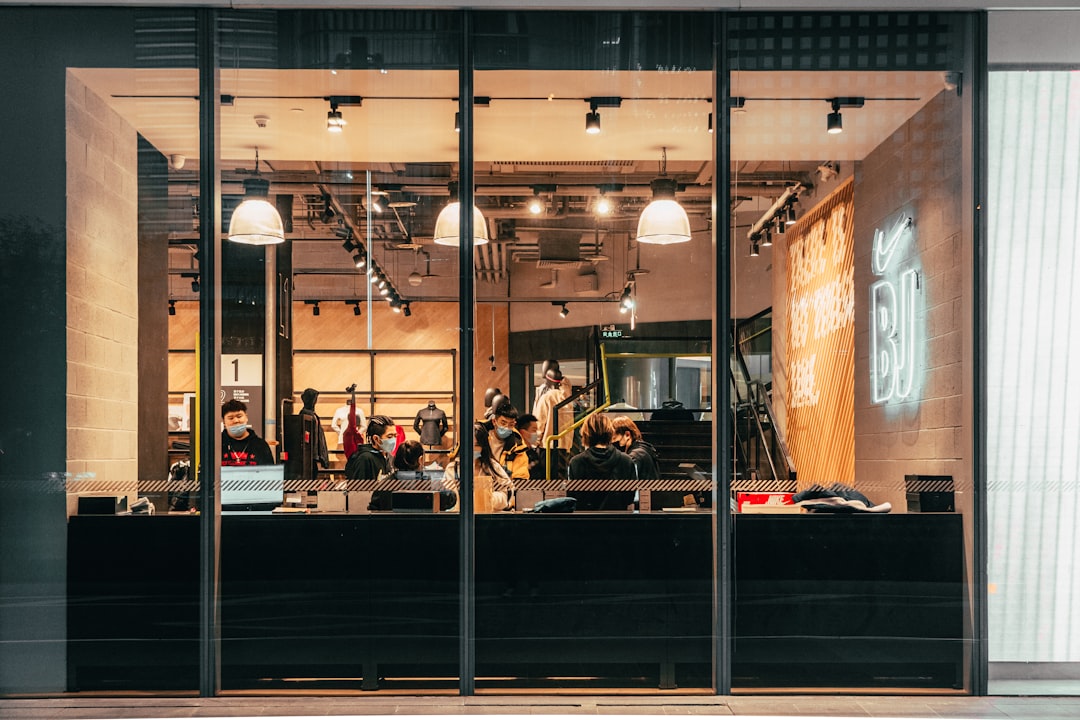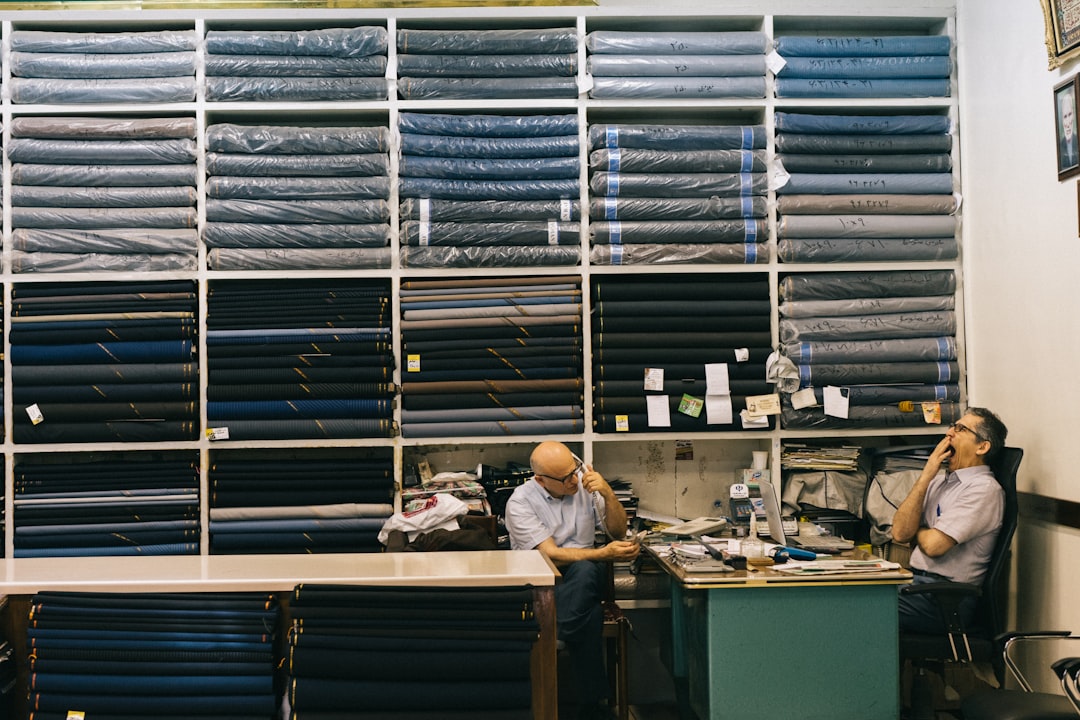

Engage prospects with a scan and streamline customer engagement with FREE QR code marketing tools by Sona – no strings attached!
Create a Free QR CodeFree consultation

No commitment

Engage prospects with a scan and streamline customer engagement with FREE QR code marketing tools by Sona – no strings attached!
Create a Free QR CodeFree consultation

No commitment
Today’s rapidly changing retail landscape presents fabric stores with mounting pressure to bridge the gap between traditional in-person experiences and an increasingly digital customer journey. With shoppers eager to explore, compare, and purchase a diverse range of textiles without friction or confusion, many fabric suppliers and textile shops are finding that legacy approaches such as static displays, printed swatch cards, or manual sign-up forms leave engagement and revenue untapped.
The inability to track high-value prospects who browse in-store or online but never submit a contact form creates blind spots in outreach and limits follow-up opportunities. QR codes have emerged as a strategic tool for fabric stores seeking to create seamless offline-to-online experiences, especially for qr codes in marketing. With a single scan, customers can move from browsing bolts of fabric to care instructions, product videos, or exclusive promotions, making each point of contact frictionless and measurable, while capturing previously anonymous engagement.
By thoughtfully integrating QR codes across physical and digital touchpoints, fabric stores can unlock new opportunities to educate buyers, personalize recommendations, and track outcomes. This article will guide you through practical steps for deploying QR codes for greater engagement and impact, while addressing the core challenges faced by modern fabric retailers.
Many fabric stores still struggle with disconnected customer journeys. Potential buyers who interact in person are often untracked, and key engagement signals go unnoticed. QR codes offer a bridge between physical touchpoints and digital actions, allowing stores to capture valuable intent signals and engage customers even after they leave the store.
To build a reliable engagement engine, treat QR codes as the connective tissue across merchandising, marketing, and service. Replace analog workflows with digital actions that are easy to complete and simple to measure. When a shopper can scan for details, save a project, or claim an offer, your store gains data and builds trust without adding friction.
Here is how to address these challenges:
Outdated workflows like paper loyalty forms and clipboard event sign-ups often lead to transcription errors and lost leads. Converting these touchpoints into QR-powered forms reduces manual work and increases completion rates. Dynamic QR codes on new-arrival signage keep content fresh without reprinting, while data from each scan enriches your CRM for more precise follow-up.
As you streamline analog processes, align each QR destination with a specific business goal. For example, a Scan to join the swatch club flow can prefill a form based on a scanned display, then trigger a welcome email and recommend patterns tied to the fabrics they viewed. This combination of usability, personalization, and measurement drives sustained engagement.

Fabric and textile retailers have long faced missed opportunities when shoppers browse, ask questions, and leave without a way to continue the conversation. Traditional tactics like generic flyers or static banners rarely capture intent. For vertical-specific tactics, see Sona QR’s industry hub. QR codes give customers an immediate path to act and give retailers a measurable signal that someone cares about a product or program.
Consider the in-aisle moment when a shopper falls in love with a rare print but hesitates because they need care guidance or inspiration. A QR code beside the bolt can deliver washing instructions, project galleries, and customer reviews within seconds. This reduces uncertainty, builds confidence, and nudges a purchase while adding the scan to your engagement data.
Dynamic QR codes elevate agility in promotions and events. When class schedules change or new discounts launch, staff can update QR destinations without reprinting materials. Embedded analytics help managers see which displays and offers are performing. Instead of guessing which window poster or bundle drove traffic, your team knows what worked and where to reinvest.
These benefits extend beyond a single purchase. With opt-in flows attached to QR experiences, stores can nurture relationships after the visit, share restock alerts, and tailor recommendations based on what the customer scanned. Over time, you replace generic follow-ups with targeted outreach in sync with each customer’s interests.
Fabric stores need QR code formats that fit the realities of shopping aisles, classroom workshops, and post-purchase care. The right choice makes scanning effortless and turns interest into measurable action.
Dynamic QR codes are especially useful when linking to seasonal promotions, class calendars, or rotating bundles. Static codes are better for evergreen resources such as washing instructions or store policies. With Sona QR, you can generate both types, manage destinations in one dashboard, and attach UTM parameters to preserve attribution in analytics tools.

Growth hides in everyday touchpoints that already command attention. Turn these moments into measurable, scannable interactions that guide customers and feed your marketing engine with reliable data.
Each of these placements can be tagged in Sona QR by location and campaign, so you know which fixtures and media drive the highest engagement. Over time, you will identify your best-performing displays, refine calls to action, and duplicate winners across stores and seasons.

QR codes should solve concrete problems for your customers while advancing your business goals. Anchor each use case to a clear destination and a measurable outcome to ensure it delivers value.
Tie each use case to metrics such as scan-to-signup rate, scan-to-purchase rate, and average order value for customers who scanned. When you can attribute outcomes to specific QR programs, budgeting and prioritization become significantly easier.
Every scan is a signal. It tells you what the shopper cares about, where they were, and when they engaged. By deploying unique QR codes across your store and marketing channels, you can automatically segment audiences and tailor follow-ups that match intent.
Start by mapping scan points to journey stages. Awareness scans might come from window signage or direct mail; consideration scans from in-aisle education and kit displays; conversion scans from coupons or checkout prompts. Each category should create a distinct audience that receives messaging appropriate to its stage.
For fabric retailers, useful distinctions include quilters vs garment sewists, budget shoppers vs premium buyers, workshop attendees vs at-home learners, and eco-minded customers seeking organic or recycled materials. With Sona QR, these segments update automatically as new scans arrive, ensuring your marketing stays current and relevant.
Disconnected campaigns dilute impact and confuse customers. QR codes provide the connective thread across print, digital, and in-store channels, so your message stays consistent and your data remains complete.
Start by mapping where your audiences encounter your brand. Fabric shoppers interact with swatch books, printed catalogs, window displays, Instagram Reels, YouTube tutorials, and workshop schedules. If each piece includes a QR code with a clear promise, you can direct attention, remove friction, and learn which channels actually move the needle.
Sona QR centralizes code management and reporting across these channels, which makes it easier to compare results and coordinate next steps. Integrations ensure scans flow into your CRM, email service, and ad platforms without manual work.
Clarify your goal before creating a code. Do you want to increase class registrations, drive sign-ups for a loyalty program, or boost sales of a new fabric line? Select one high-impact objective and identify the most relevant customer moment to trigger it.
For a fabric store, a focused example could be to drive event RSVP at a sewing expo or to collect feedback after a beginner quilting workshop. By aligning the QR experience with a specific outcome, you can craft a clear call to action and a destination that delivers immediate value.
Choose dynamic codes for campaigns that need frequent updates or granular tracking. Dynamic links support A/B testing, UTM parameters, and destination changes without reprinting, which is essential for fast-moving promotions and class schedules.
Reserve static codes for evergreen content that rarely changes, such as fabric care instructions or store hours. Static codes are simple to deploy for long-lived signage and packaging inserts, while dynamic codes power experiments and analytics for growth campaigns.
Design for visibility and trust. Add your logo, use brand colors for frames, and include a concise call to action such as Scan for a free pattern, Scan for care tips, or Scan to join rewards. Ensure the code is large enough to scan from typical distances and placed within natural sight lines.
Test across devices, lighting conditions, and angles. Try glossy and matte surfaces, curved labels, and fabric tags to confirm reliable scanning. Use short URLs to keep code density low, and avoid placing codes at floor level or near reflective materials that can interfere with cameras.
Roll out your codes strategically. Start with placements that draw the most qualified attention such as best-selling bolt ends, new-arrival endcaps, checkout counters, and workshop handouts. Extend to direct mail, window displays, and tote bag inserts once you validate engagement.
Match the message to the medium. A window code should promise a compelling off-hours benefit, a classroom code should offer downloadable instructions, and a receipt code should make rewards enrollment effortless. Tailoring the CTA to context increases scan rates and follow-through.
Measure scans by time, location, and device to uncover patterns. Compare conversions for different calls to action, artwork, and placements. Use UTM parameters in Sona QR to attribute traffic correctly in your analytics platform and test variants for continuous improvement.
Translate insights into action. If endcap scans convert best on weekends, staff those areas accordingly and rotate limited-time offers there. If class sign-up scans spike right after in-store demos, schedule reminders and deploy event-specific codes to capitalize on momentum.
For fabric stores, traditional analytics often fail to show which in-store experiences or materials drive revenue. A flyer might look great, but without a trackable action you cannot prove its value. Modern QR platforms fill this gap by capturing scan data such as location, timing, and device type, then tying those actions to buyer journeys. For frameworks on tying offline interactions to outcomes, see Sona’s blog The Essential Guide to Offline Attribution.
This visibility matters because it transforms anecdotes into evidence. Instead of guessing whether your eco-fabric display or your quilting kit bundles attracted more buyers, you can attribute purchases or visits to specific QR campaigns. You also reduce wasted spend by discontinuing underperforming placements and doubling down on winners.
As you optimize, benchmark your results. Track baseline scan-to-conversion rate, average revenue per scanner, and time from first scan to purchase. These benchmarks help you forecast outcomes for future deployments and justify investments in creative and placement.
Practical best practices can lift your scan rates and improve ROI. Focus on clarity, context, and continuity so customers know what they will get and why it matters.
Two ideas often overlooked in fabric retail are loyalty cards with a Scan to reveal your monthly perk code and kit stickers with stickers and labels. Both make the experience more delightful and measurable.

Case studies from fabric stores demonstrate the power of closing the gap between anonymous browsing and actionable follow-up. One urban textile shop installed QR codes on an eco-friendly collection that linked to sourcing details and washing guidance. Scans revealed strong weekday interest from commuters, so the store promoted lunchtime shopping with a limited-time discount. The result was a measurable lift in midweek sales and a growing segment of eco-conscious customers for tailored communications.
Another store focused on education. After each beginner quilting workshop, the instructor displayed a QR code on the projector and handouts that opened a short survey and offered a coupon for the next class level. Completion rates rose, feedback improved the curriculum, and repeat bookings increased. Follow-up emails sent to survey completers included pattern recommendations derived from the fabrics they used in class, which boosted kit sales.
Creative placements also drive discovery beyond the store. A regional chain added QR stickers to rental sewing machines that linked to machine-specific threading and tension videos. This reduced support requests and increased customer satisfaction. The same codes offered a discount on machine maintenance services, creating a cross-sell opportunity.
User-generated content loops can amplify reach. A Scan to share your make code at the photo wall directed customers to upload finished projects and tag the store. Weekly features on social channels spotlighted top projects and linked back to the original fabrics. This UGC loop increased social followers, influenced kit purchases, and created a community around the brand.
Industry advisors note that QR codes are not a gimmick when they deliver immediate utility. Customers appreciate instant access to fabric information, project guidance, and time-sensitive offers. Staff value having a consistent, data-backed way to support shoppers. Together, these outcomes help stores run smarter events, plan inventory with better insight, and nurture high-value buyers.
QR codes are transforming fabric retail into a more measurable, customer-centric experience. By embedding scannable actions across merchandising, marketing, and events, stores eliminate disconnected workflows and capture intent at the moment it happens. This enables smarter follow-ups, better segmentation, and consistent messaging from discovery through post-purchase care.
For fabric stores, the value proposition is clear. QR codes turn every surface into a digital entry point, reduce friction in key moments, and produce actionable data that fuels growth. With Sona QR, you can design, deploy, and track QR campaigns across all channels, then use Sona to connect scans to revenue with identity resolution and multi-touch attribution. Start by generating a few strategic codes for your highest-traffic displays, add clear calls to action, and build from early wins. The result is a seamless journey that delights customers, strengthens loyalty, and sustains revenue growth. Start creating QR codes for free.
QR codes have transformed fabric stores from mere retail spaces into interactive hubs of customer engagement and sales growth. Whether it’s attracting new shoppers, enriching the in-store experience, or offering instant access to tutorials and promotions, QR codes replace traditional signage with dynamic, trackable interactions that turn every product display into a powerful marketing tool. Imagine knowing exactly which fabric collections spark the most interest and being able to update offers on the fly to boost conversions.
With Sona QR, fabric stores can effortlessly create dynamic, trackable QR codes that provide real-time insights and seamless campaign updates—no reprinting needed. Every scan connects directly to customer data and sales metrics, helping you optimize inventory, personalize marketing, and drive repeat business. Start for free with Sona QR today and transform every fabric swatch into an opportunity for engagement, loyalty, and increased revenue.
Fabric stores can use QR codes placed on fabric bolts, sample tables, checkout counters, and signage to provide instant access to product details, care instructions, promotions, and event sign-ups, creating seamless offline-to-online experiences.
QR codes capture scan data such as location, timing, and customer intent, allowing stores to identify high-value prospects, segment audiences, and trigger personalized follow-ups through CRM integration, improving marketing precision and customer engagement.
Useful QR code formats include web links for product pages and care guides, vCards for contact sharing, SMS or email for opt-ins, Wi-Fi access for workshops, and app downloads, with dynamic codes enabling frequent updates and tracking.
Effective placements include fabric sample tables, packaging and product tags, checkout counters, shop windows, direct mail, brochures, social media materials, and event signage to capture customer interest at key touchpoints.
Stores can place QR codes on bolt ends and signage that link to fiber content, certifications, care instructions, shrinkage notes, and compatible pattern suggestions to boost buyer confidence and reduce returns.
Best practices include choosing clear calls to action, designing for visibility and reliable scanning, testing across devices and surfaces, assigning unique codes to each placement, and matching messages to context and customer journey stages.
QR codes on receipts, posters, and POS displays enable customers to join rewards programs, claim coupons, or unlock bundle pricing, increasing repeat business and providing first-party data for targeted marketing.
Dynamic QR codes allow stores to update linked content without reprinting, support A/B testing and tracking, and adapt quickly to changing promotions or class schedules, while static codes are better for evergreen information like care instructions.
By assigning unique QR codes to different journey stages and tagging scanners by interest or product type, stores can segment customers, feed data into CRM and ad platforms, and tailor personalized outreach based on scan behavior.
QR codes connect print, digital, and in-store channels by providing consistent, trackable calls to action that drive customers to specific online resources, enabling coordinated campaigns and comprehensive engagement analytics.
Stores can track scans, opt-in rates, conversions, and revenue influenced by each QR code using platforms like Sona QR, analyze location and timing data, and attribute sales to specific campaigns for informed decision-making.
Examples include linking eco-fabric collections to sourcing and care info, using codes for workshop feedback and coupons, adding tutorial videos to machine rentals, and encouraging customer photo sharing to build community and drive kit sales.
Use Sona QR's trackable codes to improve customer acquisition and engagement today.
Create Your FREE Trackable QR Code in SecondsJoin results-focused teams combining Sona Platform automation with advanced Google Ads strategies to scale lead generation

Connect your existing CRM

Free Account Enrichment

No setup fees
No commitment required

Free consultation

Get a custom Google Ads roadmap for your business






Launch campaigns that generate qualified leads in 30 days or less.
